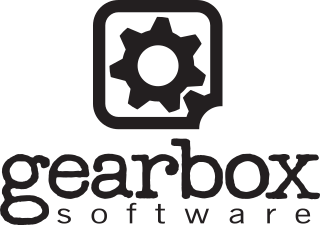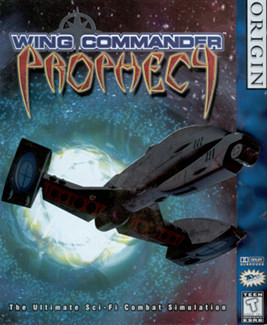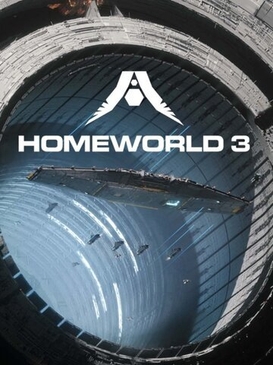
Star Trek: Armada is a real-time strategy video game for Microsoft Windows developed and published in 2000 by Activision. The game's look and feel is based primarily on Star Trek: The Next Generation, and features a few of its main characters and ships. Playable factions include the United Federation of Planets, the Klingon Empire, the Romulan Star Empire and the Borg. The game received mixed to positive reviews and was noted for being one of the better Star Trek games to be made. A sequel, Star Trek: Armada II, was released on November 16, 2001.
Relic Entertainment Inc. is a Canadian video game developer based in Vancouver, founded in 1997. The studio specializes in real-time strategy games and is known for series such as Homeworld, Warhammer 40,000: Dawn of War and Company of Heroes. Acquired by THQ in 2004, the company was sold to Sega on January 22, 2013 as part of THQ's bankruptcy and operated under its European division. On March 28, 2024, Sega sold the company to an unnamed external investor.

Homeworld 2 is a real-time strategy video game sequel to Homeworld, developed by Relic Entertainment and released in 2003 by now defunct publisher Sierra Entertainment. Its story concerns Hiigara's response to a new enemy called the Vaygr. Its gameplay takes a new direction with the enhancement of its graphics and audio. In contrast to the closely equivalent Kushan and Taiidan forces of the original game, Vaygr and Hiigaran spaceships differ significantly in design and application.

Gearbox Software is an American video game development company based in Frisco, Texas. It was established as a limited liability company in February 1999 by five developers formerly of Rebel Boat Rocker. Randy Pitchford, one of the founders, serves as president and chief executive officer. Gearbox initially created expansions for the Valve game Half-Life, then ported that game and others to console platforms. In 2005, Gearbox launched its first independent set of games, Brothers in Arms, on console and mobile devices. It became their flagship franchise and spun off a comic book series, television documentary, books, and action figures. Their second original game series, Borderlands, commenced in 2009, and by 2015 had sold over 26 million copies. The company also owns the intellectual property of Duke Nukem and Homeworld.

Heroes of Might and Magic III: The Restoration of Erathia is a turn-based strategy game developed by Jon Van Caneghem through New World Computing originally released for Microsoft Windows by The 3DO Company in 1999. Its ports to several computer and console systems followed in 1999–2000. It is the third installment of the Heroes of Might and Magic series.

Starlancer is a space-based science fiction flight simulator computer game, created by Erin and Chris Roberts, and developed by Warthog Games under the auspices of Digital Anvil.

Summoner is an action role-playing game developed by Volition and published by THQ. It was released as a launch title for the PlayStation 2 in 2000, and was subsequently ported to Microsoft Windows and Mac OS the following year. In the game, the player plays the role of Joseph and can assemble a team of compatriots and summon powerful monsters. The game has a world map, involved storyline, and unique hybrid combat system involving real-time and turn-based mechanisms.

Homeworld is a real-time strategy video game developed by Relic Entertainment and published by Sierra Studios on September 28, 1999, for Windows. Set in space, the science fiction game follows the Kushan exiles of the planet Kharak after their home planet is destroyed by the Taiidan Empire in retaliation for developing hyperspace jump technology. The survivors journey with their spacecraft-constructing mothership to reclaim their ancient homeworld of Hiigara from the Taiidan, encountering a variety of pirates, mercenaries, traders, and rebels along the way. In each of the game's levels, the player gathers resources, builds a fleet, and uses it to destroy enemy ships and accomplish mission objectives. The player's fleet carries over between levels and can travel in a fully three-dimensional space within each level rather than being limited to a two-dimensional plane.

O.R.B: Off-World Resource Base is a space strategy game developed and published by Strategy First. Much like Homeworld and its sequel Homeworld 2, units can move in all three spatial dimensions.

Star Wars: Obi-Wan, originally titled Star Wars: Episode I: Obi-Wan, is an action-adventure video game developed and published by LucasArts and released exclusively for Xbox on December 19, 2001 in North America and March 29, 2002 in Europe. It is set in the Legends canonicity of the Star Wars universe, around 32 years before the Battle of Yavin, shortly prior to and during the events of the 1999 film The Phantom Menace. Players control the Jedi Obi-Wan Kenobi. The game received generally mixed reviews upon its release.

Sword of the Stars is a space 4X game developed by Kerberos Productions. In the game the player chooses one of four unique races to form an interstellar empire and conquer the galaxy. In order to win, the player must expand territory by colonizing new star systems, exploit the resources available to their colonies, design and build starships, and improve their empire's technology through research and strategy.

Wing Commander: Prophecy is the fifth installment in the Wing Commander science fiction space combat simulator franchise of computer games. The game was released in 1997 for Windows, produced by Origin Systems and distributed by Electronic Arts. In 2003, a Game Boy Advance conversion with added multiplayer was produced by Italy-based Raylight Studios and distributed by Destination Software.

Rockstar Vancouver Inc. was a Canadian video game developer and a studio of Rockstar Games based in Vancouver. The studio is best known for developing Bully (2006).

Genesis Rising: The Universal Crusade is a 3D Real-time strategy game set in a distant future. The game was developed by Metamorf, published by DreamCatcher Interactive and released in 2007. The game takes place in space, where players control ships and try to eliminate the opponent. The game's primary focus is on squad tactics. The story is set in a mysterious futuristic universe where organic machines are built using genetic engineering. The player take on the role of Captain Iconah to explore and conquer the Universal Heart, the only part of the universe that's remained unconquered by the forces of humankind. Many of the ships are made of organic rather than synthetic material.

Star Trek: Conquest is a video game set in the Star Trek universe. The game features both turn-based strategy and real time strategy gameplay. It was developed by Scottish studio 4J Studios, which previously developed Star Trek: Encounters, and was published by Bethesda Softworks for the PlayStation 2 and Wii, becoming the third game available on a Nintendo console to be published by Bethesda and first since the NES version of Home Alone in 1991.

Homeworld: Deserts of Kharak is a real-time strategy video game developed by Blackbird Interactive and published by Gearbox Software. The game was released on January 20, 2016, and is a prequel to the 1999 space-based real-time strategy video game Homeworld.

Blackbird Interactive is a Canadian video game development studio based in Vancouver, British Columbia.

Homeworld 3 is a real-time strategy video game developed by Blackbird Interactive and published by Gearbox Software. The game was released on May 13, 2024.
Homeworld is a series of real-time strategy video games created by Relic Entertainment. Relic Entertainment developed the first two Homeworld games. The series then spent over a decade in dormancy until Gearbox Software acquired the franchise in 2012 and tasked Blackbird Interactive to develop Homeworld 3, the third mainline installment of the franchise, and the spin-off game Homeworld: Deserts of Kharak.

Homeworld: Vast Reaches is a virtual reality real-time strategy game developed by FarBridge and published by Gearbox Software. It was released on the Meta Quest 2 and Meta Quest 3, with plans to release it as a PC VR title later in 2024. It is a part of the Homeworld series of games.


















